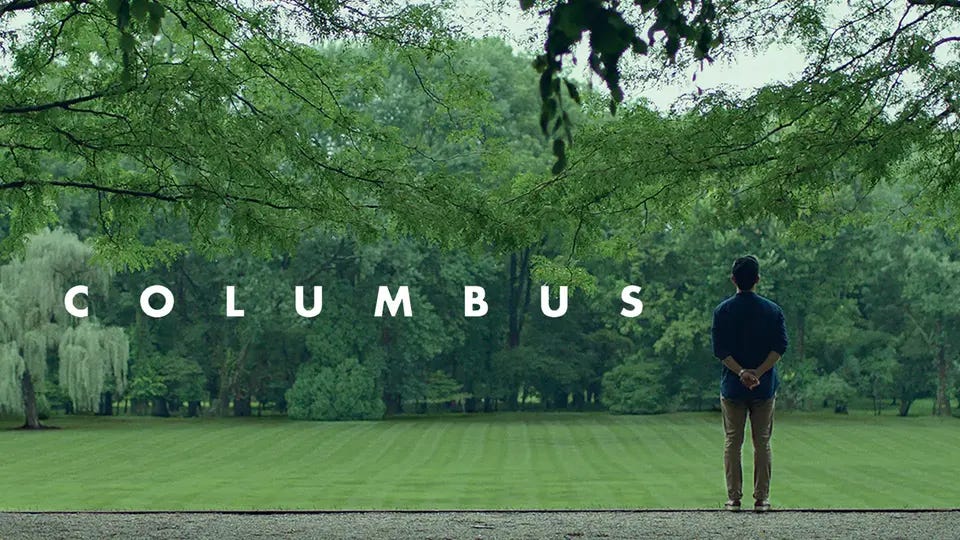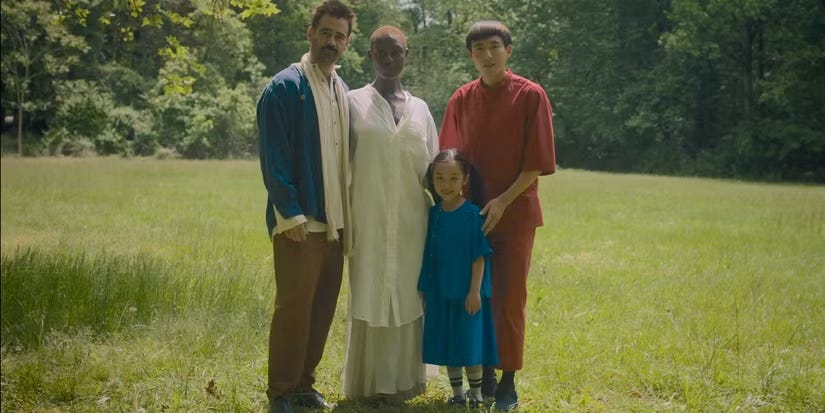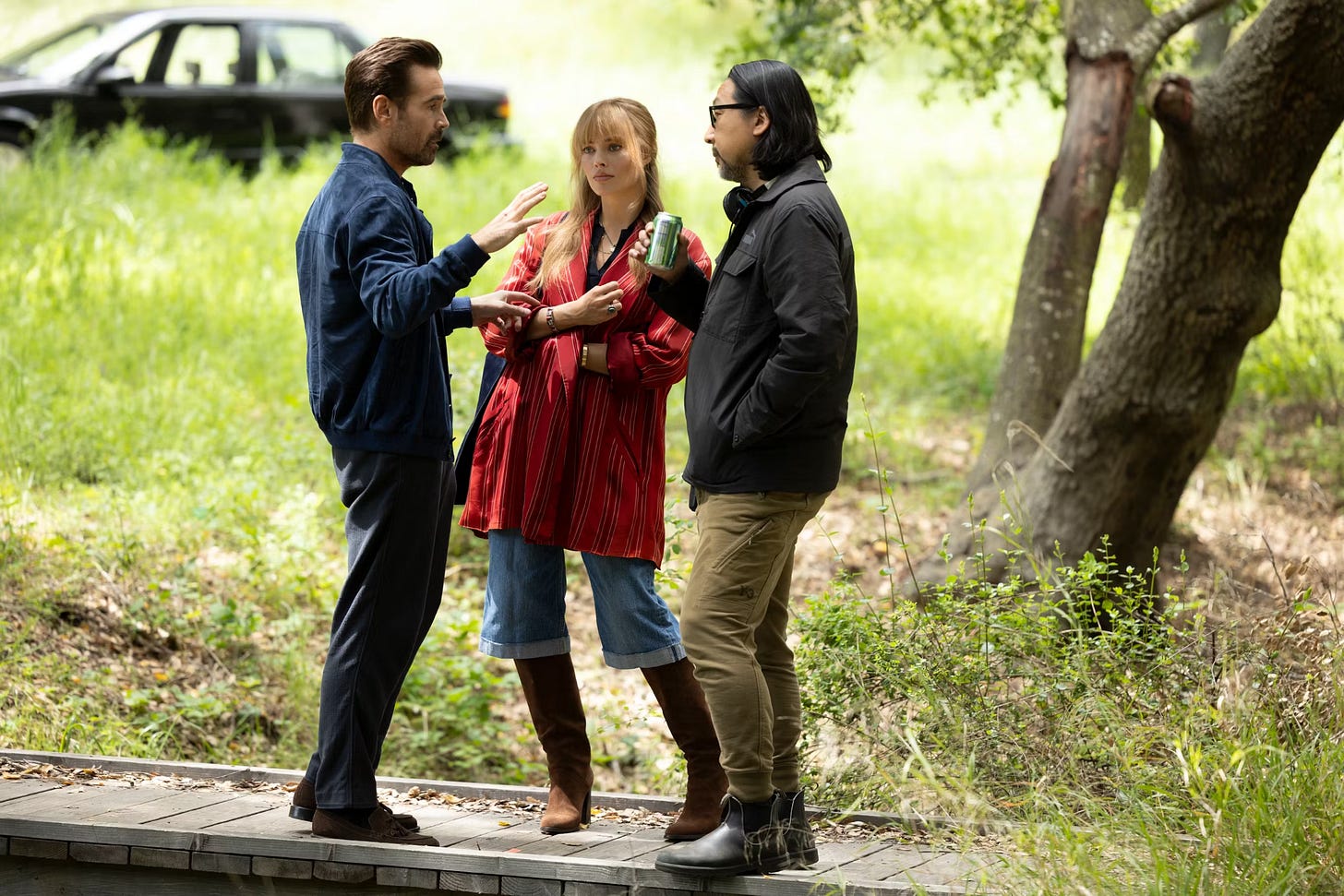Kogonada: From Vimeo Essayist to Hollywood auteur
How a Vimeo essayist turned film theory into filmmaking and made it to Hollywood.
Hi everyone —
Liking this newsletter? (Or not?)
Can you do me a favor and fill out this survey? 🙏🏼
Hope you’re crushing the week. Keep those big dreams alive, keep making good stuff and keep putting that stuff out there. It’s imperative.
Enjoy today’s Rough Cut newsletter.
—Shamir
You’d probably never guess that a content creator, a video essayist dissecting shots from Ozu and Kubrick from his bedroom, would one day premiere films at Sundance and Cannes and then go on to direct Hollywood stars like Margot Robbie and Colin Farrell.
After all, the creator economy was never really meant to produce auteurs.
In terms of cinema, YouTube plays home to people who talk about it, rather than make it.
A video essayist is, by most definitions, a teacher. Someone who translates cinema into explanation, not the other way around.
And as the old saying goes: those who can, do; those who can’t, teach.
But there’s one man who did both.
Kogonada.
The enigmatic South Korean auteur operating under a pseudonym that is itself tribute to letting his work speak for himself. A former academic who abandoned his Film Studies PhD to start filming his studies.
From bedroom to box office.
His journey traces the full arc of the modern creator: proof that the distance between small and silver screen has never been smaller.
Origins of a Supercutter
Breaking Bad // POV
It’s early 2012. A user named “kogonada” uploads a two-minute supercut to Vimeo—a hypnotic montage of every point-of-view shot from Breaking Bad.
The video is simple, unvoiced, and eerily precise: gas masks, coffee pots, and car trunks seen through the distorted eyes of Gilligan’s universe. It wasn’t criticism in the traditional sense as there’s no narration, nor text, nor analysis.
What it offered instead was closer to an x-ray of the show’s visual grammar, exposing the quiet consistency of its technique across years of storytelling.
In two minutes, Kogonada captured what most critics couldn’t in two thousand words: the director’s invisible hand guiding how we see.
It was a lesson in form disguised as a fan video and it marked the emergence of a new kind of filmmaker for the digital age.
More videos followed:
Wes Anderson // From Above
Tarantino // From Below
Then came the video that broke the internet (at least for us cinephiles).
Kubrick // One-Point Perspective
For a brief moment in 2014, it seemed every single film student, critic, and YouTube creator online was dissecting Kubrick // One-Point Perspective.
The video “didn’t even wait a few hours to take the web by storm,” as Slate put it and within days, it had racked up hundreds of thousands of views on Vimeo.
Before you say “big whoop”.
Hundreds of thousands of views in 2014 meant a lot more than it did now
We’re talking Vimeo, not YouTube anyway.
It didn’t stop there.
New York Film Academy. Slate. Vice. Nowness. PetaPixel. Premium Beat. The Filmmaker Magazine. Countless Reddit threads.
It even got an IMDB page.
There’s few video essays that ever go viral. Like, truly viral. Beyond the confines of YouTube or Vimeo but Kogonada’s Kubrick supercut was one of the few.
But why?
The video completely reframed what a “supercut” could be: not a collage of references, but a work of criticism through pure image. By distilling Kubrick’s vast style into a single formal motif Kogonada created a study where form and content mirrored each other perfectly: clinically, symmetrically, and hypnotically.
The name “kogonada” itself doesn’t exist in anyother than a homage to Kōgo Noda, Yasujirō Ozu’s longtime screenwriter.
It was an academic’s alias for a scholar hiding behind the screen. When Vice reached out to for a 2012 interview, the man behind the username remained cryptic:
I was born in Asia, now living in America, once a PhD candidate studying Ozu.
Soon, professors were showing Kogonada’s works in classrooms, and by the time he stepped out from behind the pseudonym and revealed himself as Park Joong Eun he had already legitimized the video essay as film theory in motion.
Selection and “Sushi”
Linklater // On Cinema & Time
Kogonada once compared editing to preparing sushi:
With sushi, every cut matters. And so do the ingredients. Those two ongoing choices are the difference between what you select, and how you cut it.
It’s an analogy that perfectly captures his process. His videos were never about quantity, but quality. He only has 16 videos up on his vimeo channel.
Each of his projects started with a single question: Which technique, from which director, would cut beautifully together?
For Kubrick // One-Point Perspective he revealed that he’d watched Kubrick’s films just once.
I’m less interested in documenting every example of a particular techniquethan I am in putting together something that is both attuning and visually interesting.
Though he never specified his setup, he likely worked in Premiere or a similar suite, the same tools available to anyone with a laptop and patience. What mattered wasn’t the gear but the gaze. “A good painter,” his father once told him, “can use any brush.”
That philosophy guided his career: an artist working from home, assembling visual essays for Criterion and Sight & Sound that transformed internet remix culture into something closer to cinema itself.
From Criterion to Columbus (2017)
Kogonada’s transition from critic to creator felt inevitable.
So when his debut feature, Columbus premiered in 2017, it already arrived fully formed. A film so precise and unified you’d be forgiven to assume he’d done it before.
Shot on a shoestring budget of $700,000 over just 18 days with a central theme: children grappling with the absence of their parents, set against the unlikely modernist utopia of Columbus, Indiana.
The city’s clean lines and glass facades became a physical expression of his preoccupations with form, loss, and connection.
Every frame was deliberate, bearing a meditative, Ozu-inspired stillness. Its characters act as extensions of Kogonada’s former self: Casey (Haley Lu Richardson), the guide and interpreter of structures, and Jin (John Cho), the attentive listener.
Together, they perform a live version of a video essay, dissecting architecture as a metaphor for human relationships.
And in that sense, Columbus was a literal video essay transformed into fiction.
The film premiered at the 2017 Sundance Film Festival to near-universal acclaim, earning a 96% on Rotten Tomatoes and an 89 on Metacritic.
After Columbus, After Yang (2021)
If Columbus was about the external architecture of a city, Kogonada’s sophomore feature, After Yang (2021), turned inward, exploring the intangible architecture of memory and grief.
Adapting a short story by Alexander Weinstein, Kogonada sidestepped the cold, metallic, dystopian sci-fi tropes and instead envisioned a lighter future.
A society that had survived a climate catastrophe and had been humbled into making “peace with nature”.
After Yang premiered in the Un Certain Regard section at the 2021 Cannes Film Festival to glowing reviews.
Starring Colin Farrell and Jodie Turner-Smith, the $8–10 million production built a tactile, lived-in future with warm wooden interiors, soft lighting, and subtle VFX that enhanced atmosphere rather than spectacle.
Critics praised its restraint and emotional depth: Variety called it “a quietly shattering meditation on loss and memory,” while The Guardian described it as “sci-fi with a soul.”
It went on to win the Alfred P. Sloan Prize at Sundance 2022 and holds a 92% rating on Rotten Tomatoes, solidifying Kogonada’s standing as one of contemporary cinema’s most formally disciplined and philosophically resonant directors.
Kogonada’s Big, Bold, Beautiful Journey (2025)
And with his third feature, Kogonada takes a much larger leap.
A Big Bold Beautiful Journey (2025) marks a shift in scale and authorship with a big bold and beautiful budget of around $45 million. And it’s got a big, bold and beautiful cast to match with stars like Margot Robbie and Colin Farrell.
Adapted from a script by The Menu’s Seth Reiss, the film centers on a poetic conceit: mysterious doors that appear in forests and along roadsides, allowing the protagonists to walk directly into moments from their pasts.
It is the most literal realization of Kogonada’s lifelong fixation with “passageways” and “in-between spaces” and of course, true to form, Kogonada reshaped the original script, replacing its roadside buildings with these symbolic doors, imprinting his sensibility onto the material.
Kogonada has cited the works of Hayao Miyazaki and Makoto Shinkai’s Your Name as touchstones, embracing a form of magical realism that treats artifice as a pathway to sincerity.
It’s a tonal departure from the quiet humanism of Columbus and After Yang into a bigger, bolder, more romantic gesture that still carries his meditative DNA.
But with every big leap, comes the risk of not landing. And the film sadly hasn’t stuck its own.
Many critics praised the visual poetry and emotional earnestness, while others argued Kogonada’s restrained style clashes with a screenplay some found “syrupy” and “over-romanticized.”
The result is a fascinating test of his auteurism: his first two films were pure expressions of authorship; this one is a negotiation between personal vision and studio spectacle.
However, that’s the price of admission for creating art that matters. It’s also proof of the strange, fluid era we live in, where the boundaries between critic and creator, internet and cinema, have all but disappeared.
Even YouTube critics like Chris Stuckmann are crossing over, with his horror debut Shelby Oaks marking the same cultural shift.
One minute you’re cutting a Vimeo essay or YouTube review in your bedroom; the next, you’re directing Margot Robbie for a major studio.
Only in this era would that reality not seem stranger than fiction.
If you’re reading in the app, tap the little ❤️ so we know you’re out there.




